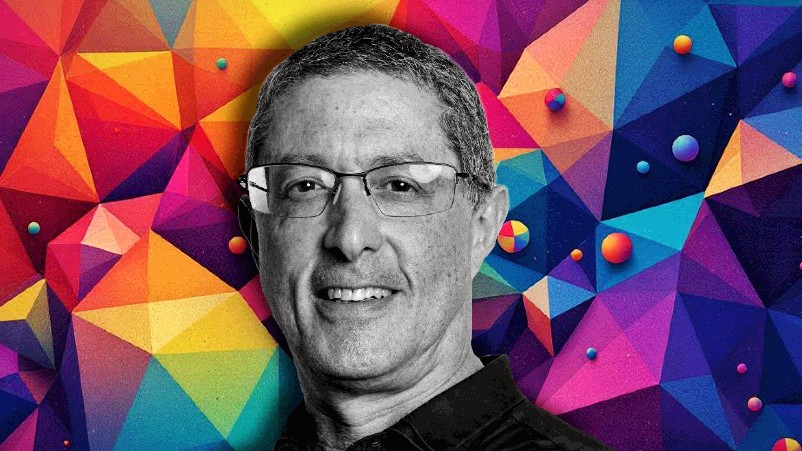Flybuys outperforms rivals again, as loyalty programs get smarter – and younger consumers get pickier

Consumers are signing up, logging in, and engaging purposefully with loyalty programs – partly out of necessity, but also due to their affinity for brands. The cost-of-living crunch has pushed Australians deeper into their loyalty programs, with active participation hitting a five-year high, according to Adam Posner’s latest For Love or Money study. And program managers have responded, reflected in improvements in how the programs are perceived. Flybuys tops the rankings, outpacing Everyday Rewards, Amazon Prime and the rest of the pack. But scratch beneath the surface, and the story gets more complex. Gens' Y and Z have a different relationship to loyalty than Baby Boomers, AI is now baked into the customer experience, raising both expectations and eyebrows. And across categories – from grocery to travel to general retail, the loyalty arms race is now defined by who can deliver simplicity, personalisation, and real value, faster.
What You Need to Know
- Flybuys flies high: Tops Australia's loyalty programs again in the annual For Love or Money study with a score of 83.1, ahead of Woolworths Everyday Rewards, Amazon Prime, and Coles Plus.
- Virgin Velocity leads among frequent flyer programs but fails to beat the average Loyalty Program Experience Index (LPEI) of 70.9, with Qantas, Jetstar and Singapore Airlines also falling short.
- 90% of Aussies are in loyalty programs, but many forget how many they’ve joined. Unprompted recall suggests about four, but prompted responses show over 10.
- Active participation up sharply, from 43% in 2021 to 51% in 2025 as inflation drives consumers to extract more value.
- Baby Boomers are the most active, but Gen Z and Y are ramping up fastest. Gen Z is less likely to be loyal to both brand and program, only 25% say so, while 41% of all consumers claim dual loyalty.
- Two-thirds of members are aware AI is being used in loyalty programs, for personalisation, service, fraud prevention and more. While risk mitigation is welcomed, some remain wary of AI-driven interactions.
- Sector lifts performance: The average LPEI of 70.9 in 2025 reflects continued improvement across simplicity, personalisation and value.
- 75% of consumers say loyalty programs have improved in recent years.
A loyalty program is not an island off the coast of a brand.
Flybuys remains Australia’s number one loyalty program in the annual For Love or Money study conducted by Adam Posner. At 83.1, it holds a clear lead over the next four programs, which are bunched together in a tight pack: Woolworths Everyday Rewards, Amazon Prime, Everyday Extra (from Everyday Rewards), and Coles Plus, with scores ranging from 81.2 to 80.3.
Among the airlines, Virgin Velocity wins the bragging rights with a score of 70.6, just pipping Qantas at 70.5, while Jetstar scored 69.7 and Singapore Airlines 68. However, none of the airline programs managed to climb above the average score in Posner’s Loyalty Program Experience Index (SPV) of 70.9. It’s worth noting on that point, as we have reported before, those results are likely an artefact of the frequency with which consumers engage with frequent flyer programs generally.
Membership of loyalty programs remains at a historical high, with 90 per cent of those polled identifying as members of loyalty programs, the same figure as last year.
However, consumers are not necessarily attentive to the question of which programs they belong to. For instance, when asked to name their programs, the average of the unprompted responses would suggest that a typical consumer is a member of just over four programs. But when given a list and prompted, that number swells to over 10.
According to the report, “Members do not always realise the number of programs they are enrolled in. Based on buying behaviours of different categories, for example, grocery v fashion, there is not always the opportunity to engage with the program often. Recall of memberships is diminished for those low-frequency memberships.”
Adam Posner’s annual For Love or Money survey is considered the gold standard for understanding not only the relative standing of loyalty programs in Australia but also the key trends.
One trend that stands out this year relates to active engagement. Reflecting consumers' needs to extract the best value from every dollar they spend, thanks to several years of elevated inflation, Posner notes: “The level of active engagement with loyalty programs has significantly increased when we compare 2021 to 2025, increasing from 43 to 51 per cent ‘active’ involvement in all the programs they are involved in. That is good news!”
Posner also notes the actual definition of “active” will vary depending on the nature of the program. For instance, shoppers buy groceries every week, and perhaps every few days, but might only catch a flight a few times a year, or even less.
Again, there’s an age difference. Baby Boomers are the most active in their loyalty programs, but Gen Z and Gen Y experienced the biggest increase this year. Overall, 75% of consumers say loyalty programs have improved in recent years.
Loyal to whom?
This year, the report also asks whether consumers are loyal to the brand, the program, or both, and finds the answer is “both”. Forty-one per cent of consumers say they are loyal to both, and only 24 per cent hint at a more transactional relationship by prioritising the loyalty program alone.
However, that’s not a universal sentiment. Older customers, Baby Boomers, basically, are more likely to say they are loyal to both, while for Gen Z, the figure is less than half of that, at 25 per cent.
Consistency is said to be the hobgoblin of small minds, and apparently, that applies to younger minds also. Indeed, Gen Z and Gen Y, at 36 and 37 per cent respectively, are more loyal to the program than the brand, although conversely, Gen Y is also the cohort most likely to say they are primarily loyal to the brand.
The overall message, according to Posner, however, is that “a loyalty program is not an island off the coast of a brand".
AI and loyalty
As with other areas of marketing and technology, AI is becoming more pervasive, and it is clear from the study consumers are aware of the issue.
As Mi3’s Fast News reported last week, two-thirds of loyalty program members are aware AI is being used to enhance their program experience through personalised rewards, customer service and support, smarter product suggestions, efficiency gains, and fraud detection. But while they're OK with it for risk mitigation, service use is raising concerns.
As we noted at the time, two-thirds of loyalty program members now recognise that artificial intelligence is being used to improve their experience. The research identified six key ways AI is reshaping loyalty programs: delivering personalised rewards, providing round-the-clock customer service, offering smarter product recommendations, automating routine tasks, detecting and preventing fraud, and tailoring benefits based on individual engagement.
On the up
At a time when Australians are leaning into loyalty programs to help with the cost of living, perhaps the best news for loyalty managers is that the sector is doing a better job across the board.
According to Posner, “In 2025 the average Loyalty Program Experience Index of 70.9 sets a foundation, and an indication that loyalty programs are delivering in the most part to the three key variables for optimising the loyalty program experience - simple, personal and valuable.”
Overall, he says the average has been rising since 2023, and that this indicates that “programs are improving across the three key variables of the loyalty program experience.”
That’s reflected by the views of consumers in the study, three-quarters of whom said they believed loyalty programs have improved in recent years.







